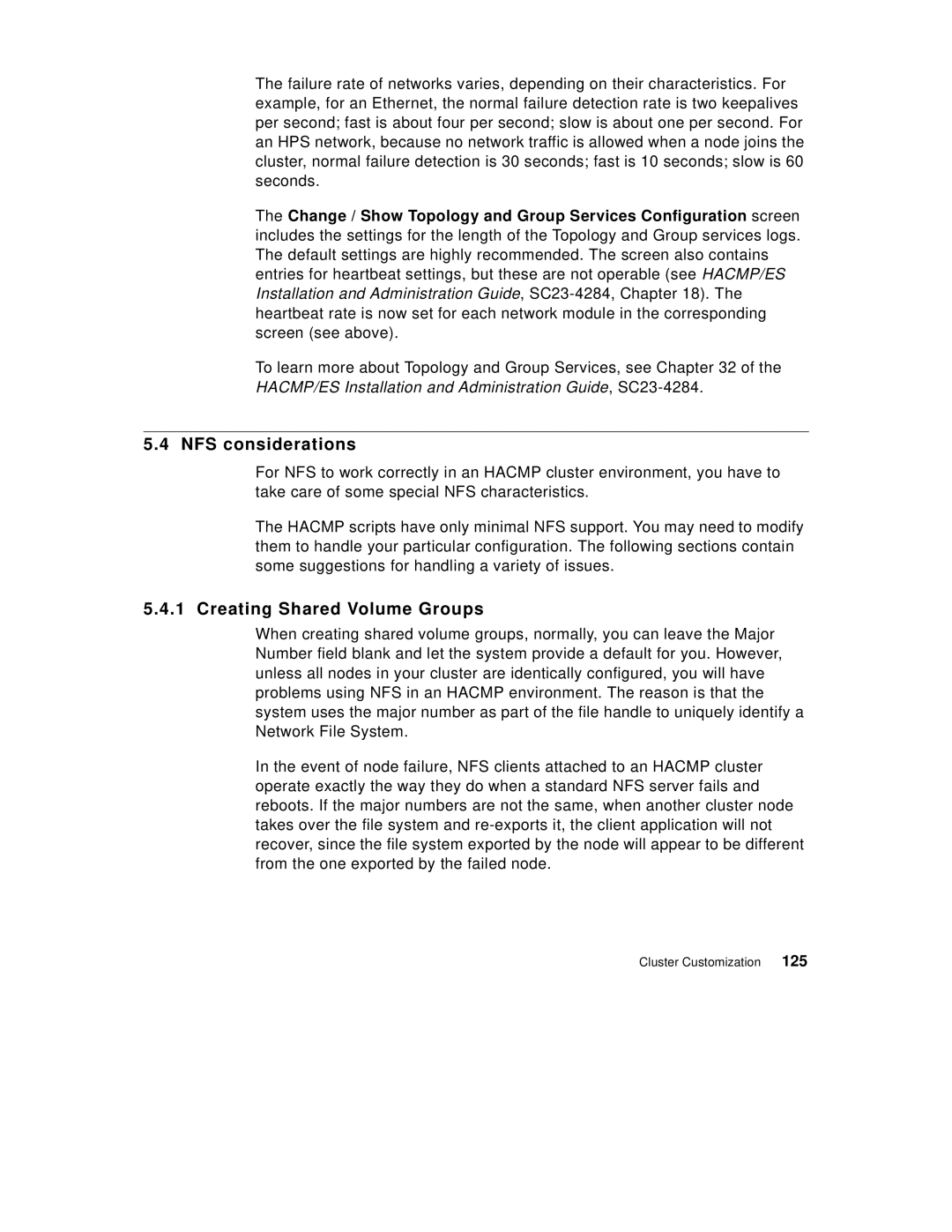The failure rate of networks varies, depending on their characteristics. For example, for an Ethernet, the normal failure detection rate is two keepalives per second; fast is about four per second; slow is about one per second. For an HPS network, because no network traffic is allowed when a node joins the cluster, normal failure detection is 30 seconds; fast is 10 seconds; slow is 60 seconds.
The Change / Show Topology and Group Services Configuration screen includes the settings for the length of the Topology and Group services logs. The default settings are highly recommended. The screen also contains entries for heartbeat settings, but these are not operable (see HACMP/ES Installation and Administration Guide,
To learn more about Topology and Group Services, see Chapter 32 of the HACMP/ES Installation and Administration Guide,
5.4 NFS considerations
For NFS to work correctly in an HACMP cluster environment, you have to take care of some special NFS characteristics.
The HACMP scripts have only minimal NFS support. You may need to modify them to handle your particular configuration. The following sections contain some suggestions for handling a variety of issues.
5.4.1 Creating Shared Volume Groups
When creating shared volume groups, normally, you can leave the Major Number field blank and let the system provide a default for you. However, unless all nodes in your cluster are identically configured, you will have problems using NFS in an HACMP environment. The reason is that the system uses the major number as part of the file handle to uniquely identify a Network File System.
In the event of node failure, NFS clients attached to an HACMP cluster operate exactly the way they do when a standard NFS server fails and reboots. If the major numbers are not the same, when another cluster node takes over the file system and
Cluster Customization 125
